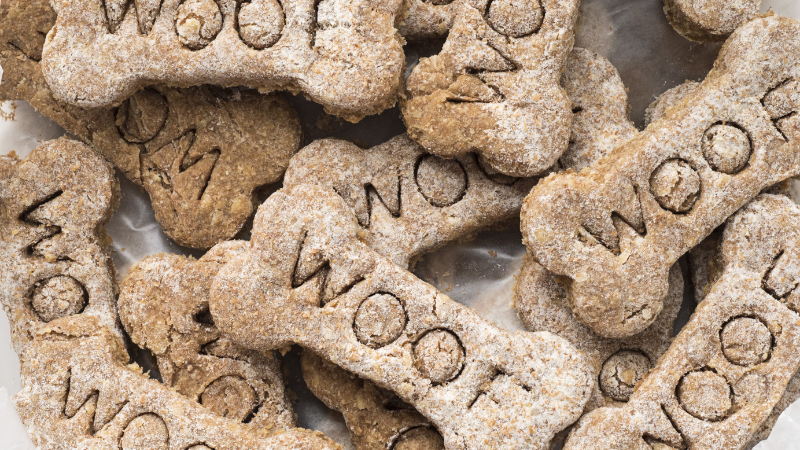
Making your own dog treats at home is a fun activity for you and your family, and it’s rewarding for your dog too! Plus, it allows you to get in the kitchen, use your hands and bake something, without adding to your waistline.
Make your own dog treats!
Ingredients:
- 2 ½ cups whole wheat flour (you can substitute with regular flour or oats if your dog is sensitive to wheat)
- 1 egg
- ½ cup beef or chicken broth (or 1 tsp. beef or chicken bouillon mixed with ½ cup hot water)
- Optional: oats, liver powder, wheat germ, shredded cheese or bacon bits
Directions:
- Preheat oven to 350º F
- Mix dry ingredients, then slowly add the chicken or beef broth
- Mix with hands and knead until the dough forms a ball (this could take up to 3 minutes)
- Roll dough with a rolling pin to approx. ½ inch thickness
- Use a cookie cutter to create bone shapes or just slice into rectangles
- Place dough pieces on a lightly greased cookie sheet
- Bake for 30 minutes until golden brown and set
- Allow to cool and store in an airtight container in the freezer for up to 6 months
Benefits to making your own dog treats
- You know exactly what’s in them. Because you’ve made them yourself, you know you’ve made your doggo a delicious and nutritious snack, free of additives and mystery ingredients.
- Something different. If your dog is used to one brand or one kind of tasty treat, making them something that looks, smells and tastes a little different could be a good way to keep them interested and give them something extra special to snack on.
- Prevent unhealthy additives. Lots of commercial dog treats have preservatives to help with their shelf life. They may also have fillers or byproducts instead of natural high-quality ingredients. Most store bought treats aren’t bad for your dog but switching it up once in-awhile with something homemade is a way to provide a healthier alternative!
Things to consider when making homemade dog treats
Keep in mind, if your pet has any allergies or sensitivities to certain ingredients, find a substitute for or omit those ingredients. You’ll also want to check the labels to make sure there’s no cross contamination with the ingredients you are using. For example, if your dog has a wheat sensitivity, make sure the flour you’re using isn’t processed at a facility that also processes wheat products (the label should say “wheat free”). If you’re experimenting with new flavours, feed the new food to your dog in a small amount to see how he or she reacts before adding it to a whole batch of treats.
